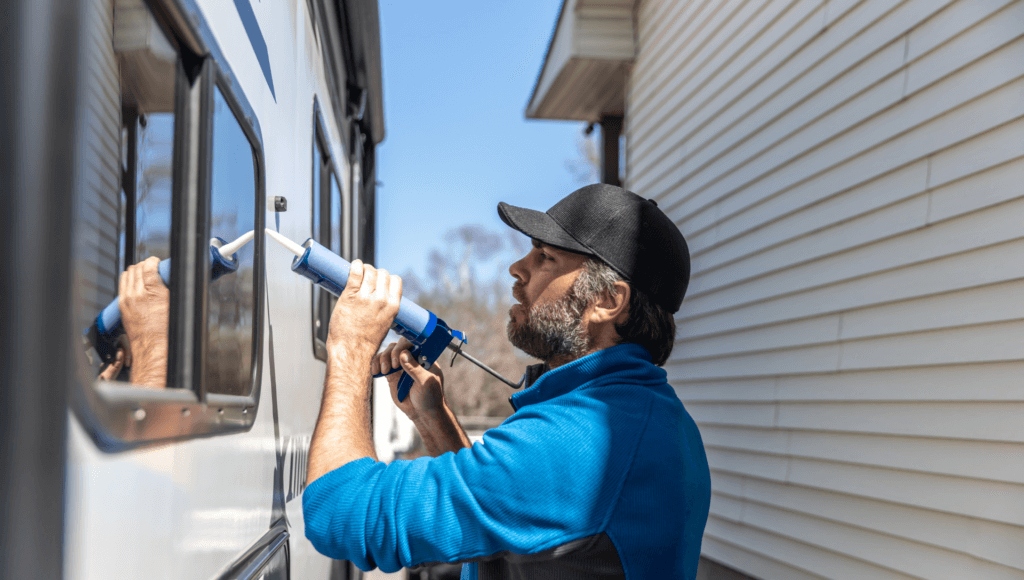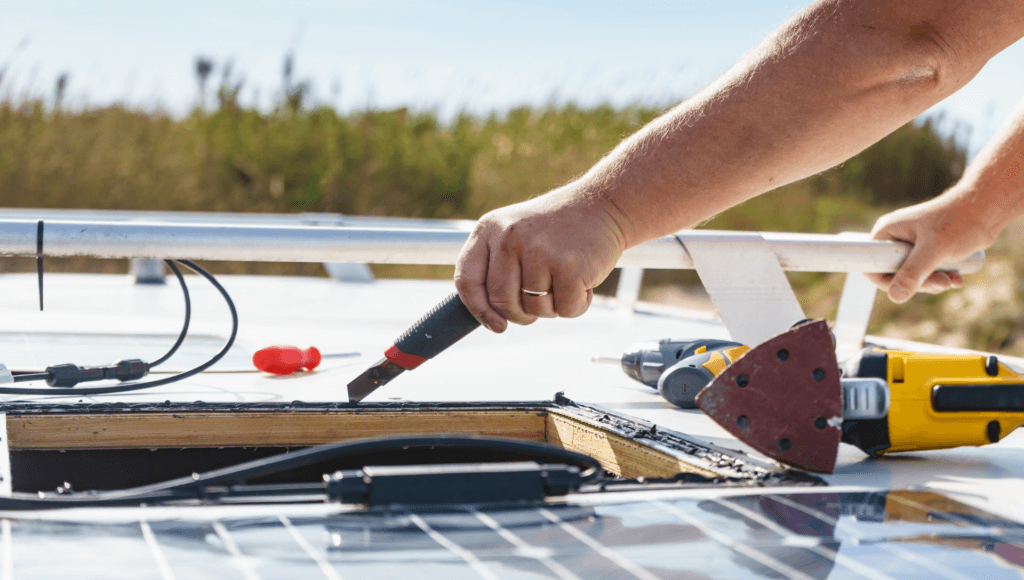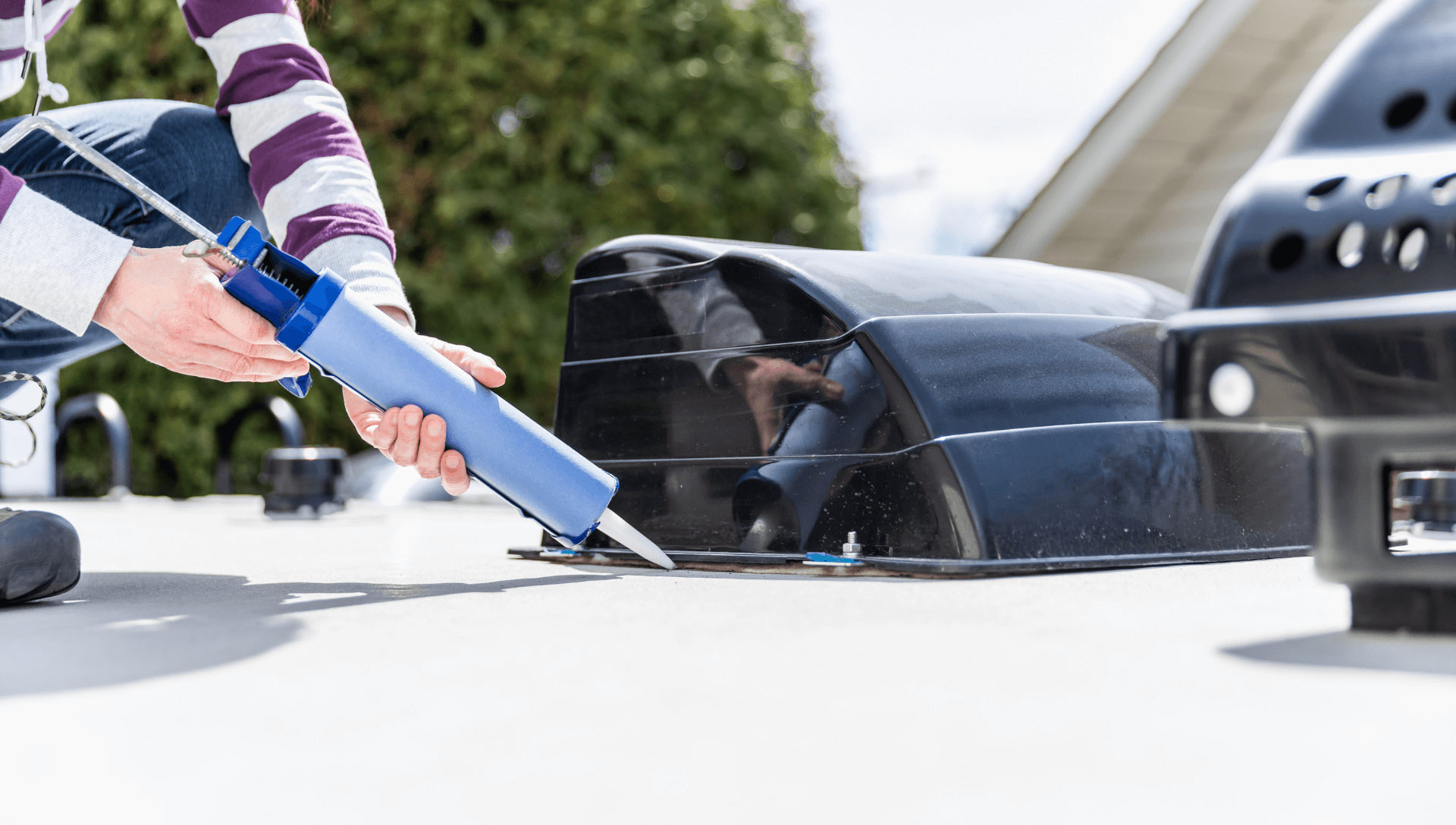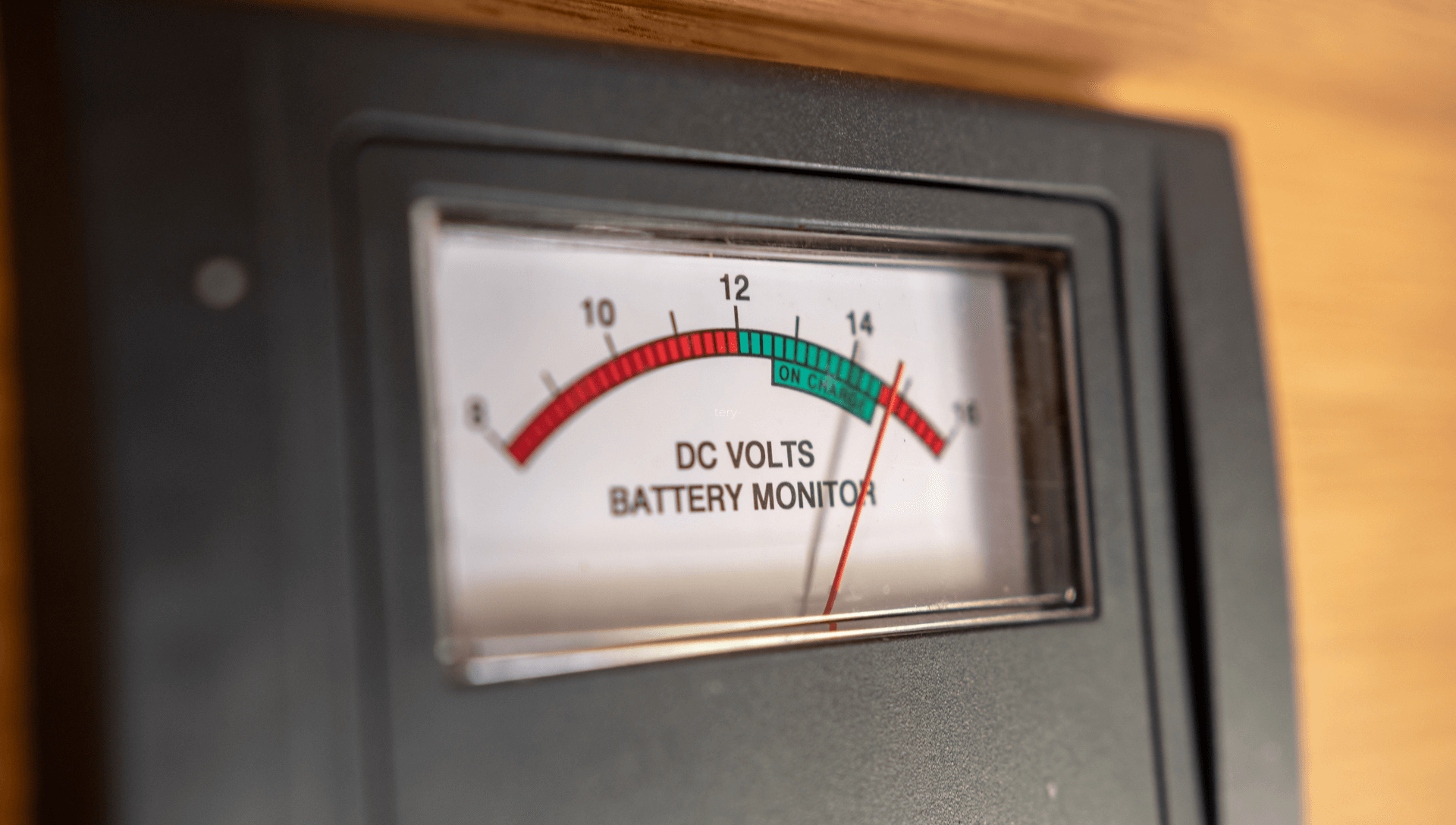Table of Contents Show
Water damage can occur any time you have a water leak inside your rig. It could be because of a slow leak that lasts for a long time before being noticed. Another way you can experience water damage is when there is a short but large leak such as a burst pipe. Here is an overview of where you’re most likely to experience RV water damage and repair costs.
Water leaks from internal pipes or tanks
The plumbing system of your RV involves pipes and tanks distributed throughout your rig, often in hard to reach or see places.
Because these pipes and tanks are hidden, there could be a slow leak that would be easy to miss if you aren’t looking for it. The longer the leak persists, the worse the damage and repair costs.
A leaky toilet
Another place you may experience water damage is around a leaky toilet. The most common place you will have a toilet leak is around the seal on the floor.
If this seal cracks or peels away, a slow leak can start. You could also have a leaky connection at the back of the toilet that may require tightening.
Another possibility would be cracking in the toilet bowl itself.
Issues with seal or sealant
Windows and other seals such as on the slides can also experience leaks when it rains. You also need to maintain the seals on your windows and slides re-apply sealant periodically to ensure you don’t get leaks.
It is important to stay on top of this regular maintenance so you don’t end up with a leaky window or slide in the middle of a downpour. There is only so much you can do at the moment in this situation.
If your slides are leaking during a hard rain, consider retracting it until the storm stops and then assess the cause of the leak to fix it.

High humidity and moisture while in use or storage
You can also experience water damage when there is high humidity within the rig. This can happen in the summer in very humid locations.
It can also happen in the winter when you’ll experience condensation inside the rig because of the outside versus inside temperature differences.
A dehumidifier or damp-rid and proper insulation can assist with maintaining appropriate humidity within the rig. This will cut back on the likelihood of water damage because of humidity.
How to Check for Water Damage in Your RV
If you suspect your RV has water damage, here is how to locate the source. Even if you don’t have concerns, it is a smart idea to do periodic checks.
RV water damage repair costs can be hefty, so it is important to regularly inspect your RV. These checks allow you to catch any would-be issues early on.
- Check all the seals: Make sure your seals are intact. When it rains hard, look at your seals to make sure there are no slow leaks.
- Open the cabinets and closets for smell or mold: You may have water damage in these locations for a variety of reasons, including leaky pipes or tanks, leaky seals, or condensation. If your closets or cabinets have an odd smell or visible mold, you are experiencing some level of water damage and need to do a more thorough check to discover the source.
- Look for any discoloration in the walls, wood cabinets, and ceiling: A clear sign of water damage in an RV is discoloration in the walls. You may also notice soft spots or bulges where delamination is occurring.
- Check the outer walls: To ensure you don’t have water damage starting from the outside in, check your outer walls as well. If you have a crack in the fiberglass or it is delaminating, water and debris can get in and wreak havoc. Also, check your storage cubbies outside for any signs of leakage or damage.
- Move the carpets and check the underside if they’re not glued down: If you have water damage underneath your carpets, the floorboard may have soft spots. These are telltale signs of water damage.
- Check windows and doors for rusted areas: Rust will occur when the metal portions of your RV are exposed to water. If you see rust on the insides of your windows or doors, that means water is getting in.
- Examine the roof and ceiling: Check for any soft spots. Climb up on top of the roof to give extra attention to the seals and around openings such as those by the vents or AC units.
RV Water Damage Estimate Repair Costs
The costs for water damage repair vary depending on the source and the size of the damage.
It will also be more expensive to hire a professional versus if you can complete the job yourself.
When in doubt though, always go the professional route to save yourself from future headaches.
Minor window or seal leak
This may be as simple as adding a fresh coat of lap sealant. This fix should only cost $10-$20.
If this fix doesn’t work or it is a larger leak, you may need to replace the seal. If you DIY this, it will probably cost less than $100 because you’ll save on the labor.
Just don’t drop your window when you take it out or you’ll end up with a much bigger price tag than planned.
To professionally replace the seals on a window you can expect to pay more. The exact price will depend on which window needs replacement.
A small window will be much more affordable than, say, replacing the seal on the windshield. To pay a professional will probably cost a few hundred dollars at least.
High humidity issues
The costs to repair RV water damage due to high humidity will depend on the extent of the damage and if you can repair it yourself versus hiring a professional.
If you catch the issue early though, you can prevent issues in the first place by spending about $30-$100 on a dehumidifier.
Leaky Toilet replacement
If a leaky toilet is causing water damage, you may need to replace it. Since this is a relatively simple replacement, you should be able to do this yourself.
The cost of the toilet itself will be around $100-$200 on average. Although some RV toilets can cost as much as a thousand dollars if you want to get fancy.
RV floors / Wall / Roof
If water damages your floors, walls, or roof, the cost depends on the extent of the damage and the materials used to repair or replace it.
This RV water damage tends to cost the most to fix. If you can complete the fix yourself, it’ll likely cost a few hundred dollars on the low end.
If you need to hire a professional, it may cost you several thousand dollars. The greater the extent of the damage, the higher the repair cost.
You may also want to consider an extended RV warranty if you are not handy to prepare for the repair costs.

Preventing Water Damage
The best way to limit RV water damage repair costs is to prevent damage in the first place. To prevent water damage regularly maintain and inspect your RV for signs of leaks.
By resealing your windows and roof, upgrading the insulation in your rig, monitoring hoses and tanks, and adding a dehumidifier, you can prevent water damage before it even starts.
It is especially important to continue to inspect your RV for water damage when it is in storage. This is because you might not see the leaks as soon as you would if you were in it full time.
If you’ll be traveling to or storing your RV in a rainy or snowy place, it is worth it to reseal everything before foul weather comes.
You can also prevent damage by having tools and sealant at the ready to use at a moment’s notice.
Simple additions like damp-rid and insulation in the closet and insulation on the windows when camping in cold weather can cut down on mold-causing condensation as well.






